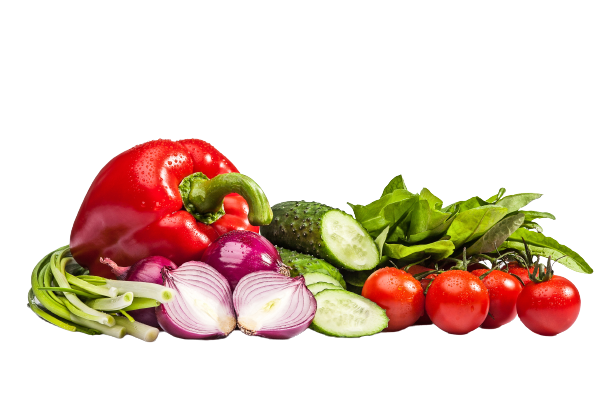Vegetables
FVEAP Vegetables production
The Fruit & Vegetable Exporters Association Punjab, (FVEPA) is a trade association representing 200 plus members across the country in all Punjab Province. The FVEAP was established in year 2016, and is registered with the D.G.T.O & SECP.The Association is a purely non-political and non-profit making body.
Our facilities are specially designed and engineered with individual climate zones supporting cold chain integrity.

Brinjal
Long prized for its deeply purple, glossy beauty as well as its unique taste and texture, eggplants are now available in markets throughout the year, but they are at their very best from August through October when they are in season. Eggplants belong to the nightshade family of vegetables, which also includes tomatoes, sweet peppers and potatoes. They grow in a manner much like tomatoes, hanging from the vines of a plant that grows several feet in height. While the different varieties do range slightly in taste and texture, one can generally describe the eggplant as having a pleasantly bitter taste and spongy texture. One of the most popular varieties of eggplant in North America looks like a pear-shaped egg, a characteristic from which its name is derived. The skin is glossy and deep purple in color, while the flesh is cream colored and spongy in consistency. Contained within the flesh are seeds arranged in a conical pattern. In addition to this variety, eggplant is also available in a cornucopia of other colors including lavender, jade green, orange, and yellow-white, as well as in sizes and shapes that range from that of a small tomato to a large zucchini. While the different varieties do vary slightly in taste and texture, one can generally describe the eggplant as having a pleasantly bitter taste and spongy texture. In many recipes, eggplant fulfills the role of being a complementary ingredient that balances the surrounding flavors of the other more pronounced ingredients.
Potato
Onion
Varieties:-
1.Pulkara
2.Desi Red
3.Pink Onion
4.Sariab Red
5.Chiltan
6.Swat
Carrots
Carrots are nutritional heroes, they store a goldmine of nutrients. No other vegetable or fruit contains as much carotene as carrots, which the body converts to vitamin A. This is a truly versatile vegetable and an excellent source of vitamins B and C as well as calcium pectate, an extraordinary pectin fibre that has been found to have cholesterol-lowering properties. The carrot is an herbaceous plant containing about 87% water, rich in mineral salts and vitamins (B,C,D,E). Raw carrots are an excellent source of vitamin A and potassium; they contain vitamin C, vitamin B6, thiamine, folic acid, and magnesium. Cooked carrots are an excellent source of vitamin A, a good source of potassium, and contain vitamin B6, copper, folic acid, and magnesium. The high level of beta-carotene is very important and gives carrots their distinctive orange colour. Carrots also contain, in smaller amounts, essential oils, carbohydrates and nitrogenous composites. They are well-known for their sweetening, antianaemic, healing, diuretic, remineralizing and sedative properties. In order to assimilate the greatest quantity of the nutrients present in carrots, it is important to chew them well – they are the exception to the rule – they are more nutritious cooked than raw.
However during few off season months, potatoes from cold storages replenish the exhausting fresh supplies. Potato carries rich nutritional value due to plenty of carbohydrates. Potato snacks industry is gaining wide acceptance throughout the country. A few varieties being cultivated in Pakistan are Cardinal, few varieties being cultivated in Pakistan are Cardinal, Desiry, Faisalabad, White, Red, Lal Faisal etc.
GreenChilli
Turnips
Turnips are a good low calorie source of vitamin C and fiber. Turnip greens contain large amounts of vitamin A and especially large amounts of lutein, which has been shown to help prevent cataracts and cardiovascular disease. Turnips have been unfairly singled out as an unpleasant vegetable, when in reality their taste is similar to radishes when raw, and very mild once cooked.Turnips also contain more familiar nutrients such as fiber, vitamin C, vitamin B6, folate, calcium, potassium and copper.
Bitter Gourd
The bitter melon (also known as bitter gourd) looks like a cucumber but with ugly gourd-like bumps all over it. As the name implies, this vegetable is a melon that is bitter. There are two varieties of this vegetable: One grows to about 20 cm long, is oblong and pale green in color. The other is the smaller variety, less than 10 cm long, oval and has a darker green color.Both varieties have seeds that are white when unripe and that turn red when they are ripe. The vegetable-fruit turn reddish-orange when ripe and becomes even more bitter.
Bitter gourds are very low in calories but dense with precious nutrients. It is an excellent source of vitamins B1, B2, and B3, C, magnesium, folic acid, zinc, phosphorus, manganese, and has high dietary fiber. It is rich in iron, contains twice the beta-carotene of broccoli, twice the calcium of spinach, and twice the potassium of a banana.Bitter melon contains a unique phyto-constituent that has been confirmed to have a hypoglycemic effect called charantin. There is also another insulin-like compound known as polypeptide P which have been suggested as insulin replacement in some diabetic patients.
Pakistan is Fruit and vegetable growing country. Besides the fruit Pakistan export vegetable in large quantities. Like lady finger (Bhindi), Bitter gourd or Karela is seasonal vegetable and very bitter in taste it is a rich source of phosphorous. The needs of phosphorous in human body are fulfilled by regular use of bitter gourd is invigorating and keeps. Bitter gourd is a blood purifier, activates spleen and liver and is highly beneficial in diabetes. It is a purgative, appetizer, digestive, anti-inflammatory and has healing capacity.
It has unique taste and very delicious vegetable, full of vitamin and can be cooked in different ways and in different vegetables. It is good for diabetes patients.
Availability: March to December
Cauliflower
Cauliflower is a cultivar within the species Brassica oleracea, in the family Brassicaceae. It is an annual plant that reproduces by seed. Typically, only the head (the white curd) is eaten while the stalk and surrounding thick, green leaves are discarded. Cauliflower is very nutritious, and may be eaten cooked, raw or pickled. Its name is a variation of cole flower or kale flower (cole and kale being variations of the same word), an acknowledgment of its unusual place among a family of food plants which normally produces only leafy greens for eating. The Brassica oleracea species is the same species as cabbage, brussels sprouts, kale, broccoli and collard greens, though they are of different cultivar groups.Cauliflower is low in fat, high in dietary fiber, folate, water and vitamin C, possessing a very high nutritional density. Traces of almost all the B vitamins, calcium, iron, magnesium, phosphorous, potassium and zinc are to be found in this highly charged vegetable.
As a member of the brassica family, cauliflower shares with broccoli and cabbage several phytochemicals which are beneficial to human health, including sulforaphane, an anti-cancer compound released when cauliflower is chopped or chewed. In addition, the compound indole-3-carbinol, which appears to work as an anti-estrogen, appears to slow or prevent the growth of tumors of the breast and prostate. Cauliflower also contains substances which may improve the liver’s ability to detoxify carcinogenic substances. A high intake of cauliflower has been found to reduce the risk of aggressive prostate cancer
Lady finger
Lady finger is a common vegetable seen in the local markets. It is cooked in a different ways, in different parts of the world. The vegetable can be steamed, seasoned and even added to soups. The goodness of lady finger is not something that people have only realised recently. The value of the lady finger has been proclaimed and advocated for years.
The vegetable is popular for its diuretic properties. It has been used in the treatment of urinary tract infections for many years now and in many countries of the world. Besides this, lady finger is used as the base for poultices, as a sudorific and emollient and an antiscorbutic. It is also used effectively in the cure of dysuria. The vegetable is used extensively as a plasma replacement and blood volume expander.
In many underdeveloped countries, the lady finger is being made a mandatory part of the daily diet for the undernourished, by the supervising authorities like the UNO and other voluntary organizations. The vegetable, when boiled, becomes slimy and thick. This pulpy form is used to add body to soups and other dishes. This green ‘wonder’ is excellent for health and is now a popular additive to many alternative healthcare treatments too.
Lemon
Lemons are oval in shape and feature a yellow, texturized outer peel. Like other citrus fruits, their inner flesh is encased in eight to ten segments. While most lemons are tart, acidic and astringent, they are also surprisingly refreshing. While rarely consumed on their own, lemons make a major contribution to the flavors of many foods we eat. Although you wouldn’t choose this tart citrus fruit for a snack, you might well squeeze some lemon juice over a fish fillet, add a wedge of lemon to your tea, or grate some flavorful lemon zest into your favorite cookie dough. It wasn’t until vitamin C was discovered in 1932 that scientists understood that it was this vitamin, not the fresh fruit itself, that protected against the disease.
Aside from supplying substantial amounts of vitamin C, the main benefits of lemons relate to their seasoning potential. By adding tart fresh lemon juice and lemon zest to recipes can reduce the amount of salt needed to enhance the flavors in rice, potatoes, salads, and cooked vegetables–while adding no fat and negligible calories.
cucumber
The cucumber (Cucumis sativus) is a widely cultivated plant in the gourd family Cucurbitaceae, which includes squash, and in the same genus as the muskmelon. The cucumber is a creeping vine that roots in the ground and grows up trellises or other supporting frames, wrapping around ribbing with thin, spiraling tendrils. The plant has large leaves that form a canopy over the fruit.Although less nutritious than most fruit, the fresh cucumber seeds are still a source of vitamin C, vitamin K, and potassium, also providing dietary fiber, vitamin A, vitamin B6, thiamin, folate, pantothenic acid, magnesium, phosphorus, copper, and manganese.
The silica in cucumber is an essential component of healthy connective tissue, which includes muscles, tendons, ligaments, cartilage, and bone. Cucumber juice is often recommended as a source of silica to improve the complexion and health of the skin, plus cucumber’s high water content makes it naturally hydrating—a must for glowing skin. Cucumbers are also used topically for various types of skin problems, including swelling under the eyes and sunburn. Two compounds in cucumbers, ascorbic acid and caffeic acid, prevent water retention, which may explain why cucumbers applied topically are often helpful for swollen eyes, burns and dermatitis.

FVEAP specializes in the production and trading of agricultural products worldwide. We have a range of agriculture products we harvest from our own farms and handle them carefully till delivery to our client’s premises.
Office Address
Email:
Telephone :
+92 322-6474-444
